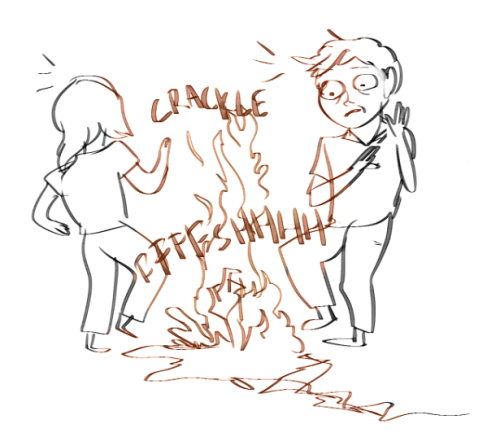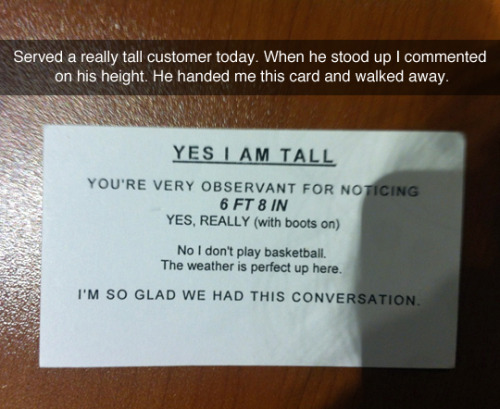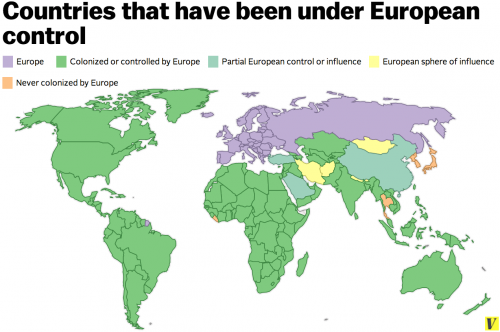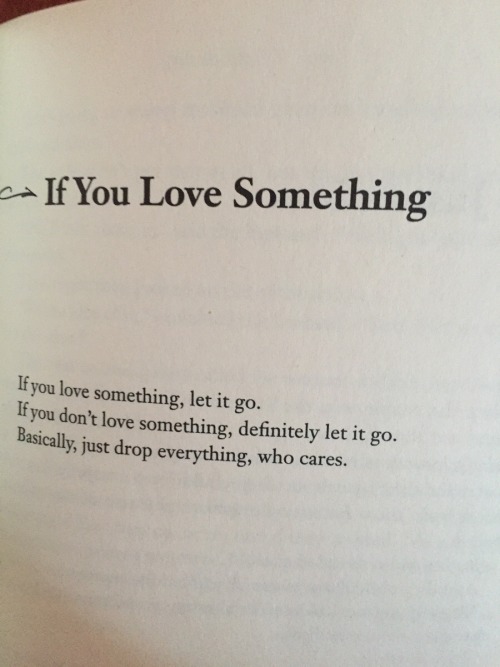
Shared posts
A London Street Artist Paints Swarms of Bees on Urban Walls to Raise Awareness of Colony Collapse Disorder

Street artist Louis Masai Michel is on a one-man mission to raise awareness of the plight of the humble honey bee through his Save the Bees mural project . The murals began shortly after Michel returned from a trip to South Africa where he was painting endagered animals, when he began to learn about about bees and the grave implications of colony collapse disorder. He immediately set out to paint a series of murals incorporating bees on walls around London in May of last year, but the endeavor proved wildly popular and has since spread to Bristol, Devon, Glastonbury, Croatia, New York, Miami, and New Orleans. Many of the bee works were done in collaboration with artist Jim Vision, including pieces in Shoreditch, Bethnal Green, and Hackney.
Michel is currently taking a break from bees to open a show of unrelated artwork at Lollipop Gallery later next month, but plans are in the making for a phase two sometime next year. You can see more of his bee work in this gallery.
We learned about this Michel’s #SavetheBees work through a collaboration between Sony’s #FutureofCities project and photographer Abbie Trayler-Smith who has been documenting urban beekeeping in London. You can read a short interview with her here.









Photo by Abbie Trayler-Smith courtesy Sony’s #FutureofCities

Photo by Abbie Trayler-Smith courtesy Sony’s #FutureofCities
Update: Updated to include information about collaborating artist Jim Vision.
Solar Eclipse Around The World

The sun is seen during a partial eclipse over a statue of the Duomo gothic cathedral in Milan, Italy, Friday, March 20, 2015. An eclipse is darkening parts of Europe on Friday in a rare solar event that won’t be repeated for more than a decade. (Photo by Luca Bruno/AP Photo)

A solar eclipse is seen through a dark glass plate in Sarajevo, Bosnia, on Friday , March 20, 2015. Solar eclipse is darkening parts of Europe on Friday in a rare solar event that won’t be repeated for more than a decade. (Photo by Amel Emric/AP Photo)

A partial solar eclipse is seen from near Bridgwater, in south western England, March 20, 2015. (Photo by Toby Melville/Reuters)

A woman watches a partial solar eclipse through a dark glass plate in Budapest March 20, 2015. A solar eclipse swept across the Atlantic Ocean on Friday with the moon set to block out the sun for about 2-1/2-hour, sky gazers in Europe, Africa and Asia getting a partial celestial show. (Photo by Laszlo Balogh/Reuters)

A partial solar eclipse is seen from near Bridgwater, in south western England, March 20, 2015. (Photo by Toby Melville/Reuters)

A partial solar eclipse is seen through a dark glass plate in Budapest March 20, 2015. (Photo by Laszlo Balogh/Reuters)

A partial solar eclipse forms in the sky through clouds near the cross of the Church of St Nicholas the Miracle-Maker in Sofia March 20, 2015. A partial eclipse was visible on Friday, the first day of northern spring, across parts of Africa, Europe and Asia. The total eclipse of the sun was only be visable in the Faroe Islands and the Norwegian archipelago of Svalbard in the Arctic Ocean. (Photo by Stoyan Nenov/Reuters)

Pupils pose with their safety glasses as they try to view a partial solar eclipse through thick fog at “Halde Hoheward” in the western city of Herten March 20, 2015. A partial eclipse was visible on Friday, the first day of northern spring, across parts of Africa, Europe and Asia. The total eclipse of the sun was only be visable in the Faroe Islands and the Norwegian archipelago of Svalbard in the Arctic Ocean. (Photo by Ina Fassbender/Reuters)

People watch a partial solar eclipse through exposed x-ray film in Marseille March 20, 2015. A partial eclipse will be visible across parts of Africa, Europe and Asia on Friday, the first day of northern spring. (Photo by Jean-Paul Pelissier/Reuters)

A man uses binoculars with special filters as he watches a partial solar eclipse, despite the cloudy weather, at Madrid’s Planetarium March 20, 2015. A solar eclipse swept across the Atlantic Ocean on Friday with the moon set to block out the sun for a few thousand sky gazers on remote islands with millions more in Europe, Africa and Asia getting a partial celestial show. (Photo by Sergio Perez/Reuters)

Commuters stop to stare and take photographs as they try to see a partial solar eclipse from London Bridge in London March 20, 2015. (Photo by Dylan Martinez/Reuters)

A boy holds home-made protective glasses outside The Royal Observatory during a partial solar eclipse in Greenwich, south east London March 20, 2015. (Photo by Stefan Wermuth/Reuters)

People wearing solar viewing glasses observe a partial solar elcipse in Reykjavik March 20, 2015. (Photo by Sigtryggur Ari/Reuters)

A girl holds a home-made protective viewing box outside The Royal Observatory during a partial solar eclipse in Greenwich, south east London March 20, 2015. (Photo by Stefan Wermuth/Reuters)

Irena Simic uses a self-made monocular to watch a partial solar eclipse on the bank of river Main in front of the skyline of Frankfurt, March 20, 2015. (Photo by Kai Pfaffenbach/Reuters)

A partial solar eclipse in seen above a mosque in Oxford, central England March 20, 2015. (Photo by Eddie Keogh/Reuters)

A partial eclipse of the sun is seen through clouds behind a roadside crucifix at Goulien, in Finistere, western France, March 20, 2015. (Photo by Mal Langsdon/Reuters)

Bridal pair Sarah Wolf and Michael Wilde (R) and their guests look through a rescue foil as they watch a partial solar eclipse in Munich March 20, 2015. (Photo by Michaela Rehle/Reuters)

The solar eclipse is seen over Stonehenge on Salisbury Plain, Salisbury, southern England March 20, 2015. (Photo by Kieran Doherty/Reuters)

A person holds up a strip of exposed photographic film to observe a partial solar elcipse in Szczecin March 20, 2015. (Photo by Agencja Gazeta/Reuters)

A girl uses a welding mask to view a partial solar eclipse from Bradgate Park in Newtown Linford, central England March 20, 2015. (Photo by Darren Staples/Reuters)

A total solar eclipse occurs over Svalbard March 20, 2015. (Photo by Haakon Mosvold Larsen/Reuters/NTB Scanpix)

People watch a partial solar eclipse from the grounds of Belfast Zoo, in Belfast March 20, 2015. (Photo by Cathal McNaughton/Reuters)

A total solar eclipse is seen in Longyearbyen on Svalbard, Norway March 20, 2015. (Photo by Jon Olav Nesvold/Reuters/NTB Scanpix)

A woman watches a partial solar eclipse in Budapest March 20, 2015. (Photo by Laszlo Balogh/Reuters)

People look at a total solar eclipse on Svalbard March 20, 2015. (Photo by Haakon Mosvold Larsen/Reuters/NTB Scanpix)

Children react as they wear protective glasses to watch a partial solar eclipse in a square of Pontevedra in the northwest Spain March 20, 2015. (Photo by Miguel Vidal/Reuters)

A partial solar eclipse is seen through clouds in Sarajevo March 20, 2015. (Photo by Dado Ruvic/Reuters)

A bird rests on a branch as a partial solar eclipse is seen, near Bridgwater, in south western England, March 20, 2015. (Photo by Toby Melville/Reuters)

A woman uses a solar viewing filter to observe a partial solar eclipse in Vienna March 20, 2015. (Photo by Leonhard Foeger/Reuters)

A girl looks up to try to view a partial solar eclipse outside the Planetarium of the Royal Observatory of Belgium in Brussels March 20, 2015. The total eclipse is visible in parts of the north Atlantic and Scandinavia, and with a 80-85 percent partial eclipse across Belgium. (Photo by Yves Herman/Reuters)

A man uses a welding face mask to observe a partial solar eclipse in Viennaa March 20, 2015. (Photo by Leonhard Foeger/Reuters)

A cross on the dome of the Cathedral of Christ the Saviour is seen during a partial solar eclipse in Moscow, March 20, 2015. A solar eclipse thrilled thousands of sky gazers on remote Arctic islands on Friday but clouds disappointed some viewers of a rare celestial show that was also partly visible for millions in Europe, Africa and Asia. (Photo by Maxim Shemetov/Reuters)

A partial solar eclipse is seen over a statue at the Mausoleum of Hadrian, usually known as Castel Sant’Angelo, in Rome March 20, 2015. (Photo by Yara Nardi/Reuters)

A man uses a special solar visor as he looks at a partial solar eclipse in a square of Pontevedra in the northwest Spain March 20, 2015. (Photo by Miguel Vidal/Reuters)

A partial solar eclipse is seen over a statue at the Mausoleum of Hadrian, usually known as Castel Sant’Angelo, in Rome March 20, 2015. (Photo by Yara Nardi/Reuters)

A partial solar eclipse is seen over St.Peter’s Basilica in Rome March 20, 2015. (Photo by Yara Nardi/Reuters)

A man watches a partial solar eclipse looking through a floppy disc from the medieval Charles Bridge in Prague March 20, 2015. (Photo by David W. Cerny/Reuters)

Birds fly and settle on trees in front of a partial solar eclipse, near Bridgwater, in south western England, March 20, 2015. (Photo by Toby Melville/Reuters)

A star on the top of the tower of the Kremlin is seen during a partial solar eclipse in central Moscow, March 20, 2015. (Photo by Tatyana Makeyeva/Reuters)

A student observes the shadow of a partial eclipse cast on to white paper, at the Astronomical Observatory in Bialystok, Poland March 20, 2015. (Photo by Agencja Gazeta/Reuters)

A solar eclipse is viewed by ESA’s Sun-watching Proba-2 minisatellite, using it’s SWAP imager to capture the Moon passing in front of the Sun in a near-totality, in this handout image provided by the Royal Observatory of Belgium March 20, 2015. SWAP views the solar disc at extreme ultraviolet wavelengths to capture the turbulent surface of the Sun and its swirling corona. (Photo by Reuters/ESA/Royal Observatory of Belgium)

A combination photo shows the various stages of a solar eclipse as viewed by ESA’s Sun-watching Proba-2 minisatellite, using it’s SWAP imager to capture the Moon passing in front of the Sun to a near-totality, in this handout image provided by the Royal Observatory of Belgium March 20, 2015. (Photo by Reuters/ESA/Royal Observatory of Belgium)

A view from a plane during the so-called “Eclipse Flight” from the Russian city of Murmansk to observe the solar eclipse above the neutral waters of the Norwegian Sea, March 20, 2015. (Photo by Sergei Karpukhin/Reuters)

The shadow of a partial eclipse is cast on to the cheek of a student on the roof of the Jana Dlugosza Academy in Czestochowa, Poland March 20, 2015. (Photo by Grzegorz Skowronek/Reuters/Agencja Gazeta)

People take pictures onboard a plane during the so-called “Eclipse Flight” from the Russian city of Murmansk, to observe the solar eclipse above the neutral waters of the Norwegian Sea, March 20, 2015. (Photo by Sergei Karpukhin/Reuters)

A T-shirt and other items of eclipse merchandise are displayed for sale in a store in Torshavn, the capital city of the Faeroe Islands, Thursday, March 19, 2015. For months, even years, accommodation on the remote Faeroe Islands has been booked out by fans who don’t want to miss an almost three-minute-long astronomical sensation. Now they just have to hope the clouds will blow away so they can fully experience Friday’s brief total solar eclipse. (Photo by Matt Dunham/AP Photo)

A man uses a dental X-ray to better observe the solar eclipse in Kosovo capital Pristina on Friday, March 20, 2015. Clouds moving over the country allowed only brief views of the eclipse which in southern Europe was partial. (Photo by Visar Kryeziu/AP Photo)

A solar eclipse is seen through a dark glass plate in Sarajevo, Bosnia, on Friday , March 20, 2015. Solar eclipse is darkening parts of Europe on Friday in a rare solar event that won’t be repeated for more than a decade. (Photo by Amel Emric/AP Photo)

A woman stops to watch a solar eclipse outside a shopping mall in Bucharest, Romania, Friday, March 20, 2015. Clouds obscured the sun for most of the time the eclipse took place. Sign reads “Don’t look directly at the sun, danger of blindness”. (Photo by Vadim Ghirda/AP Photo)

A dog, named Patatte, has protective glasses put on by her owner during a solar eclipse in the sky in Nice, southeastern France, Friday, March 20, 2015. An eclipse is darkening parts of Europe on Friday in a rare solar event that won’t be repeated for more than a decade. (Photo by Lionel Cironneau/AP Photo)

A person uses a pair of binoculars to watch the moon pass infront of the Earth’s star marking a total eclipse, the only one this year, in Vigo, northwestern Spain on March 20, 2015. The Norwegian archipelago of Svalbard, located 1,300 kilometres (800 miles) from the North Pole, is along with the Faroe Islands the only place the total eclipse will be visible, assuring three minutes of total darkness when the moon totally blocks the sun. (Photo by Miguel Riopa/AFP Photo)

A solar eclipse is seen through a dark glass plate in Sarajevo, Bosnia, on Friday, March 20, 2015. Solar eclipse is darkening parts of Europe on Friday in a rare solar event that won’t be repeated for more than a decade. (Photo by Amel Emric/AP Photo)

A partial solar eclipse of the sun is visible in Infante D Henrique square in Porto, North of Portugal, 20 March 2015. A Partial Solar Eclipse is seen in Europe, northern and eastern Asia and northern and western Africa on 20 March 2015. (Photo by Nuno Veiga/EPA)

People observe the solar eclipse in Milan on March 20, 2015. (Photo by Fotogramma/Splash News)
Need hosting? Design You Trust is proudly supported and hosted by WebHostingBuzz Premium Infrastructure & Network.
Chart of the Week: The Breadth of European Colonization
This is a map of the countries Europe colonized, controlled, or influenced between 1500 and 1960. The purple is Europe. The orange countries are ones never under European rule. Almost the entire rest of the map — all the green, blue, and yellow — were dominated by Europe to some extent. “Influenced” is pretty much a euphemism and often not all that different than outright domination.
Max Fisher, writing at Vox, summarizes:
There are only four countries that escaped European colonialism completely. Japan and Korea successfully staved off European domination, in part due to their strength and diplomacy, their isolationist policies, and perhaps their distance. Thailand was spared when the British and French Empires decided to let it remained independent as a buffer between British-controlled Burma and French Indochina…
Then there is Liberia, which European powers spared because the United States backed the Liberian state, which was established in the early 1800s by freed American slaves who had decided to move to Africa.
More details and discussion at here.
Lisa Wade is a professor of sociology at Occidental College and the co-author of Gender: Ideas, Interactions, Institutions. You can follow her on Twitter and Facebook.(View original at http://thesocietypages.org/socimages)
Glasses that let colorblind people see colors for the first...
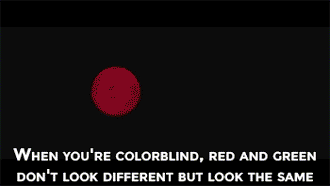
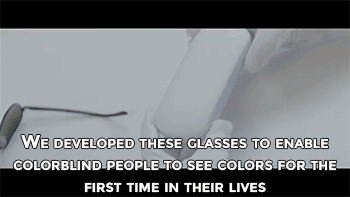



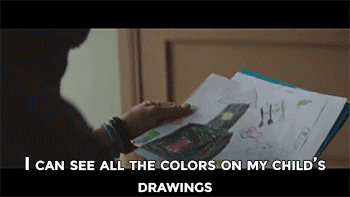


Glasses that let colorblind people see colors for the first time.
Melhor domingo de todos, certeza.
sixpenceee:VeinViewer: an infrared device that detects the...



VeinViewer: an infrared device that detects the location of a patient’s veins and projects them on the skin so doctors and nurses don’t miss. It was developed by the Christie Medical Holdings company. They mainly show surface veins
jedavu:Frozen Lakes PatternsWith the fall of temperatures, we...

Bubbles Under The Ice of Abraham Lake by Emmanuel Coupe.

Bubbles in The Ice of Abraham Lake by Phillips Chip.

Frozen Pond by Adam Rifkin.

Ice Rider in Siberia by Matthieu Paley.

Baikal Lake in Russia by Daniel Kordan.

Lake Druzhby in Antarctica by Stu Shaw.

Blue Pond in Japan by Kent Shiraishi.

Frost Flowers in the Arctic Ocean by Matthias Wietz.

Frost Flowers in the Arctic Ocean by Matthias Wietz.

Pond in Switzerland by Dartai.
Frozen Lakes Patterns
With the fall of temperatures, we have gathered for you the most beautiful photographs of frozen lakes and ponds from all around the world : Russia, Switzerland, Japan or also in Canada, their frozen surfaces are full of aesthetic and graphic patterns.
Sobre o debate político: "Don't be a dick"
Há algo de intrigante nesse título, mas para quem está dentro do movimento -- com ou sem aspas, agora tanto faz -- a questão é bem clara: depois de ouvir a bilionésima defesa apaixonada da homeopatia, depois da milésima manifestação de fé na astrologia, depois quaquilionésima argumentação falaciosa em prol do criacionsimo ou contra a vacina de sarampo, é muito fácil sucumbir à tentação de imaginar que todo mundo que está do outro lado da conversa é ou imbecil ou mal intencionado, e reagir de acordo.
O bônus é que há maneiras extremamente inteligentes de ser escroto, o que gratifica o ego -- ironia e sarcasmo podem ser finos como um florete ou brutais como um cutelo -- e, se você não estiver se sentindo especialmente inspirado, mesmo uma escrotice clássica, curta e grossa, haverá de atrair os aplausos dos colegas: é muito legal ver um colega dando aos charlatões e aos idiotas exatamente o que merecem.
Exceto que: talvez não mereçam. Talvez não sejam todos idiotas e charlatões. No mínimo, se o objetivo final do movimento é educar o público e trazer sanidade para o debate, fazer o público se sentir cretinizado e insultado pode não ser uma boa ideia.
Claro, existe o arquétipo do Velho Professor Britânico, o mestre irascível cujos insultos cuidadosamente calculados e sarcasmos poético-filosóficos não só estimulam o desenvolvimento intelectual dos pupilos como conquistam seu amor e admiração. O Velho Professor Britânico é a versão escolástica do Sargento Durão, o militar de cara fechada e coração (secretamente) aberto que, por meio da aplicação judiciosa de bullying, ameaça, palavrões e tortura forja meninos assustados e egoístas em homens corajosos e solidários.
Veja bem, não digo que é impossível que ambos os arquétipos possam funcionar. Talvez haja situações em que pessoas que se enquadram neles sejam até mesmo necessárias e essenciais para a sobrevivência da civilização. Mas me parece extremamente provável que funcionem muito menos, e sejam muito menos necessários, do que quem se identifica com eles gostaria de imaginar.
Bom, dei toda essa volta para falar sobre o debate poplítico brasileiro, principalmente da forma como é travado nas redes sociais. Em sua palestra, Plait em certo momento pergunta à plateia algo como, "quantos de vocês abandonaram uma crença falsa ao serem chamados de idiotas?" Traduzindo a questão para o universo do Facebook, ela poderia ser: "Quantos de vocês desistiram de apoiar um impeachment ao serem chamados de fascistas golpistas?" Ou, do outro lado: "Quantos de vocês passaram a criticar Dilma ao serem chamados de petralhas corruptos?"
Na palestra, algumas pessoas levantaram a mão em resposta à provocação de Plait -- e não nego que, de vez em quando, um tapa da orelha retórico pode levar alguém a prestar mais atenção nos argumentos e a rever suas posições, mas o número de pés-de-ouvido simbólicos distribuídos a torto e a direito por aí supera toda e qualquer necessidade real.
A esmagadora maioria das comunicações sobre política que flutuam na rede é escrota e reiterativa: faz pouco caso dos adversários, desestimula a interrogação, reforça dogmas. O que é ótimo para aquilo que os gringos chamam de shouting matches -- "campeonatos de gritaria" -- mas não serve para mais nada.
Mesmo quando tenta se revestir de um caráter argumentativo, a carga de condescendência e pressuposta superioridade ("precisamos conversar sobre" = "senta aí e me escuta, seu retardado"), somada à dose cavalar de premissas "óbvias" não examinadas -- afinal, por que o PT é "uma quadrilha"? Por que a mídia é "golpista"? -- simplesmente esmagam o propósito.
O pior é que isso não funciona nem mesmo se supusermos que os diferentes grupos estejam, não tentando travar um diálogo, mas apresentar seus pontos para a massa indecisa e perplexa. Cada vez mais, escreve-se para cortejar o aplauso de quem já está no coro, reforçar a fé dos convertidos e, eventualmente, destilar bile, não para validar posições e gerar clareza. O que é um enorme desperdício.
Analysis: People Who Use Firefox Or Chrome Make Better Employees
Read more of this story at Slashdot.
SimCity's Empire Has Fallen and Skylines Is Picking Up the Pieces
Read more of this story at Slashdot.
The decoy price.The technique of adding a significantly more...

The decoy price.
The technique of adding a significantly more expensive option in order to instantly make the other options look reasonable by comparison. These kinds of manipulations have been shown to be scarily effective.
For example:
Pricing decoys are another way retailers get you to part with more money than you planned on. In his book Predictably Irrational, behavioural economist and professor Dan Ariely demonstrates how a large magazine successfully employed a strategy called the “decoy effect” to increase revenue from subscription sales. Prospective subscribers were given three choices:
1. Web-only subscription for $59
2. Print-only subscription for $125
3. Web + print subscription for $125
At first glance, the middle price point appears to be superfluous. Why would anyone buy a print-only subscription for $125 if they could get a web and print for the same price? Ariely tested the price points with MIT students and found that 16% of students chose option 1 and 84% chose option 3; not surprisingly, none chose option 2.
Then Ariely did something really interesting; on the assumption that having a decoy price (option 2) was influencing people’s choices, he removed the decoy and retested the price points. This time, the subscription choices were as follows:
1. Web-only subscription for $59
2. Web + print subscription for $125
With the decoy removed, the option that had previously been the most popular – the more expensive print + online access subscription – suddenly became the least popular choice. Only 32% of those surveyed chose the more expensive option, with 68% selecting the online-only subscription. Clearly the middle price point wasn’t superfluous; it was smart marketing that made option 3 look more attractive to subscribers.
Avraham Byers, Here’s why you should always pay full retail price, Financial Post, April 22nd 2014
173. CHRIS HARDWICK: The gift of life
TadeuThis one is awesome!
Chris Hardwick is a stand-up comedian, podcaster, television host, actor and geek icon. His Nerdist Podcast, in which he and his pals interview celebrities and creative people, is one of my favourites.
This quote is taken from Hardwick’s memoir/self-help book The Nerdist Way: How to Reach The Next Level (in Real Life). In the book, Hardwick shares how he levelled-up and seized control of his own mind. He landed a gig as an MTV host at 22 but admits he was not prepared for the world of show business. What followed were “several years of laziness, drinking and f**kups.” By the time he was 30, Hardwick was overweight, drank too much, had bad credit and little work prospects. He decided to do something about it, got sober, got in shape and devoted himself to improving his life (you can compare ‘Chubby Chris’ to ’New and Improved Chris’ in this blog post he wrote). He went on to start the incredibly successful Nerdist empire, and today is a stand-up comedian, TV host and pretty much the King of all pop-culture.
So what actually is a Nerdist? Taken from The Nerdist Way:
There are Nerds, and then there are Nerdists. A Nerdist is, more specifically, an artful Nerd. He or she doesn’t just consume, he or she creates and innovates. Freelancers, game designers, graphic designers, DMs (Dungeon Masters), musicians, artists, crafties, and writers are all examples of Nerdists. Yes, we obsess over things, but we are also driven to produce stuff. It may not be surprising, then, that I refer to Nerdists as “creative obsessives.” The technology explosion in the Information Age has allowed us to flourish, whereas even as recently as fifteen years ago we would have had to get jobs that devoured our souls and pooped them out into little cubes, with little recourse for pursuing our Nerdly passions in any professional capacity. OUR TIME IS NOW.
Can I get an ‘Amen’?
RELATED COMICS: Kevin Smith – It Costs Nothing to Encourage an Artist. Jim Henson – A Puppeteer’s Advice. Amy Poehler – Great People Do Things Before They’re Ready.
Thanks to Patty Marvel for submitting this quote.

